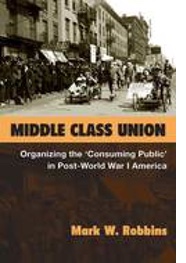Trump’s Like Other Politicians in This One Respect

At a recent campaign-style speech, President Trump sold his plan to restructure the nation’s tax system as a “middle class miracle.”
It is a category that has come up frequently throughout Trump’s political career. Shortly after gaining the Republican nomination for the presidency, he proclaimed that “the middle class … have just been absolutely forgotten in our country.” Eight months later, in his inaugural address, he stated, “The wealth of our middle class has been ripped from their homes and then redistributed across the entire world,” while declaring, “The forgotten men and women of our country will be forgotten no longer.”
 Since
then, Trump’s tweets, statements, and campaign rallies have
suggested, directly or indirectly, that the middle class, as the
backbone of American society and its proud history, has suffered from
a variety of external threats. He has condemned immigration from
Mexico and Middle Eastern countries, government regulation, labor
unions, international trade agreements, high costs of healthcare, and
a host of other factors, each supposedly under government control.
Simultaneously, with each new Trump administration policy proposal,
from health care to tax reform, commentators have interrogated what
it would mean for the nation’s “middle class.”
Since
then, Trump’s tweets, statements, and campaign rallies have
suggested, directly or indirectly, that the middle class, as the
backbone of American society and its proud history, has suffered from
a variety of external threats. He has condemned immigration from
Mexico and Middle Eastern countries, government regulation, labor
unions, international trade agreements, high costs of healthcare, and
a host of other factors, each supposedly under government control.
Simultaneously, with each new Trump administration policy proposal,
from health care to tax reform, commentators have interrogated what
it would mean for the nation’s “middle class.”
Appeals to the imprecise category of the “middle class,” so commonly at the heart of nearly any presidential candidate or pundit’s political commentary, has acted as a powerful force in American history. To a large extent, this rhetoric is rooted in a moment nearly a century ago when many self-identifying “middle class” Americans came together as part of new grassroots organizations to demand justice in a changing economy.
Right after World War I, almost one hundred years before Trump’s references to the “forgotten” middle class, politicians, the media, and everyday Americans made similar commentary on the beleaguered middle class as the “forgotten folk.” They complained about it being “submerged,” “ground to jelly,” or into “pieces between the upper and lower mill stone” as it struggled to keep up with the high cost of living amidst the growing temptations of an expanding consumer economy. Their culprits were somewhat different than Trump’s – elite profiteers and greedy labor unions who created high prices for everyone in between.
In this moment, from 1919 to 1921, self-proclaimed “middle class” individuals transformed these words into actions, forming the first organizations designed to protect specifically the “middle class” from opposing forces. These groups ranged from members of tenant societies who refused to pay high rents (barricading themselves behind their doors), to new-clothing boycott clubs, which stopped traffic by parading in protest down the streets of American cities, both large and small.
Politicians took notice. Office holders and aspirants from city councils to the presidency praised their efforts and even joined their clubs. Partly as a result of this collaboration, many blue-collar Americans suffered from being treated as scapegoats for high prices, and struggled to make a living wage.
Importantly, middle-class activists, the politicians fishing for their votes, journalists, popular movies, music, books, and plays, shared virtually the same commentary on the “awakening” of the “forgotten” middle class. They projected the middle class as the backbone of the nation, as the expression of its core values, and as under threat. The nation’s health, they declared, depended on the status and prominence of its middle class. Collectively, they established these notions as national norms that persist to the present day.
Then and now, no one has established a precise, universally accepted definition of the middle class. To the century-old activists, it was white-collar workers who unfairly lacked the necessary purchasing power to feed their consumer desires. In the decades following, the category has included anyone from factory workers to college professors. In part, its vagueness is what makes the term so politically appealing. It evokes a connection between patriotism and nearly everyone’s cultural and economic aspirations to live comfortably and represent the core of the nation’s values.
The term also implies that there are those outside of its boundaries – those who do not belong to the exclusive club. While the category can serve as a unifying point for Americans to focus on the shared cultural values that come with a collective national pride and on a common desire for an American standard of living, it can also act as a dangerous tool to sow divisions by defining the nation in narrow terms. We must ask ourselves and our public officials, who is left behind when we each imagine the middle class?